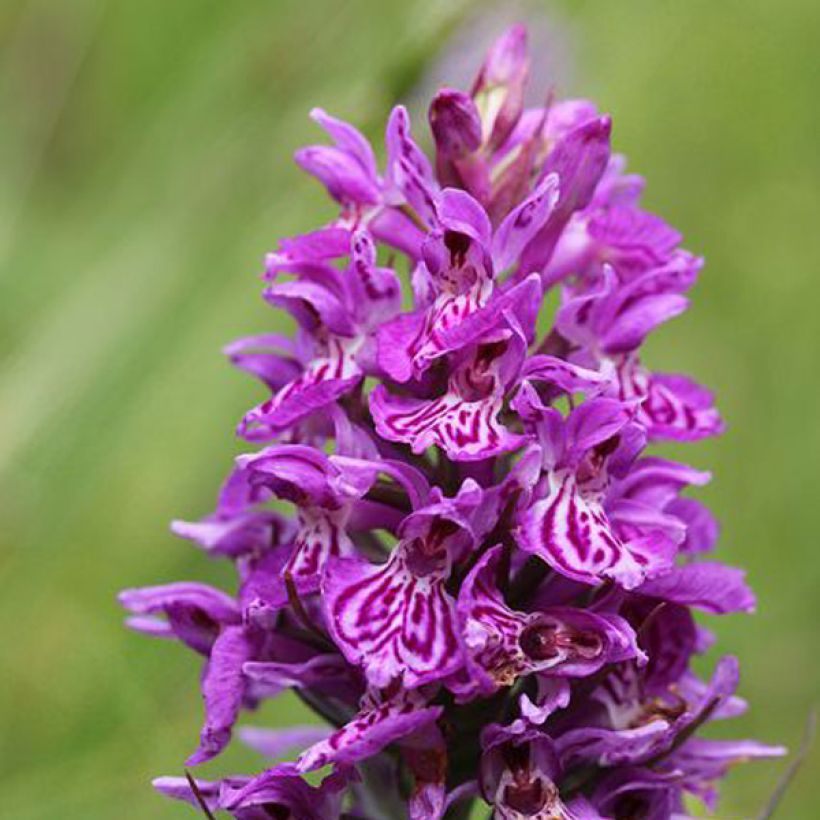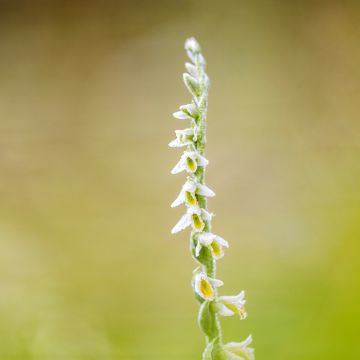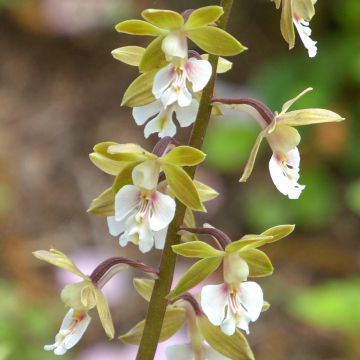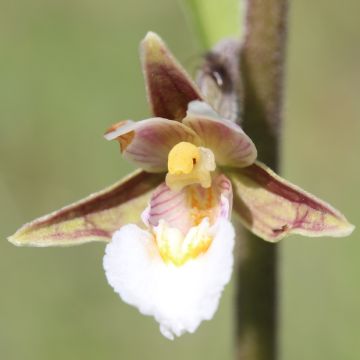

Dactylorhiza majalis - Marsh Orchid


Dactylorhiza majalis - Marsh Orchid


Dactylorhiza majalis - Marsh Orchid


Dactylorhiza majalis - Marsh Orchid


Dactylorhiza majalis - Marsh Orchid
Dactylorhiza majalis - Marsh Orchid
Dactylorhiza majalis
Broad-leaved Marsh Orchid, Western Marsh Orchid
This item cannot be shipped to the selected country
Delivery charge from €5.90
More information
Schedule delivery date,
and select date in basket
This plant carries a 12 months recovery warranty
More information
We guarantee the quality of our plants for a full growing cycle, and will replace at our expense any plant that fails to recover under normal climatic and planting conditions.
From €5.90 for pickup delivery and €6.90 for home delivery
Express home delivery from €8.90.
Does this plant fit my garden?
Set up your Plantfit profile →
Description
Dactylorhiza majalis, commonly known as the Wide-leaved Orchid, Marsh Orchid or May Dactylorhiza, is a beautiful wild orchid found naturally in damp, clayey soils. This perennial species with spring flowering is recognized by its floral spikes adorned with light purple flowers streaked with dark purple, and its glaucous green foliage speckled with brown to purple. Like many terrestrial orchids, it has specific requirements but can become prolific where it thrives. Plant this orchid in a sunny spot, in a small moist meadow or on the banks of a pond. It tolerates limestone well.
Dactylorhiza majalis is distributed in Western Europe, Central Europe, and southern Scandinavia. It is a species that is closely associated with wet to flooded, clayey, and often limestone soils. The Marsh Orchid belongs to the orchid family. From a botanical point of view, the genus Dactylorhiza is separated from the genus Orchis because of the presence of finger-shaped roots (Dactyle = finger; Rhiza = rhizome).
The May Dactylorhiza is perfectly hardy. Its foliage emerges in spring and disappears early in the season, sometimes as early as August. Flowering occurs between May and late June, depending on the climate. In the center of the foliage, a hollow stem rises, reaching an average height of 30cm (12in). The inflorescence is a dense spike adorned with numerous flowers surrounded by long bronze-green bracts. The flowers are a vibrant purple colour. Each flower is composed of spread-out lateral sepals, an upper sepal, and two lateral petals that form a galea. The labellum is trilobed, streaked with dark purple on a pink-purple background. The leaves are oblong to lanceolate in shape, almost always maculated with violet brown.
Dactylorhiza majalis, sometimes called the Marsh Orchid, easily establishes itself and self-seeds in moist, sunny meadows, along the edges of natural ponds, in rich soil, even clayey or limestone soil. Our plants do not come from wild digging but from specialized nurseries. In nature, this orchid grows among grasses such as Molinia caerulea subsp. caerulea; you can perfectly reproduce this association in your garden.
Report an error about the product description
Dactylorhiza majalis - Marsh Orchid in pictures


Flowering
Foliage
Plant habit
Botanical data
Dactylorhiza
majalis
Orchidaceae
Broad-leaved Marsh Orchid, Western Marsh Orchid
Western Europe
Other Garden Orchids
Planting and care
Dactylorhiza majalis establishes and self-seeds quite easily as long as the conditions suit it: plant it in moist and sunny meadows, at the edge of natural ponds, in a rich soil, even clayey, and even limestone.
Planting period
Intended location
Care
This item has not been reviewed yet - be the first to leave a review about it.
Haven't found what you were looking for?
Hardiness is the lowest winter temperature a plant can endure without suffering serious damage or even dying. However, hardiness is affected by location (a sheltered area, such as a patio), protection (winter cover) and soil type (hardiness is improved by well-drained soil).

Photo Sharing Terms & Conditions
In order to encourage gardeners to interact and share their experiences, Promesse de fleurs offers various media enabling content to be uploaded onto its Site - in particular via the ‘Photo sharing’ module.
The User agrees to refrain from:
- Posting any content that is illegal, prejudicial, insulting, racist, inciteful to hatred, revisionist, contrary to public decency, that infringes on privacy or on the privacy rights of third parties, in particular the publicity rights of persons and goods, intellectual property rights, or the right to privacy.
- Submitting content on behalf of a third party;
- Impersonate the identity of a third party and/or publish any personal information about a third party;
In general, the User undertakes to refrain from any unethical behaviour.
All Content (in particular text, comments, files, images, photos, videos, creative works, etc.), which may be subject to property or intellectual property rights, image or other private rights, shall remain the property of the User, subject to the limited rights granted by the terms of the licence granted by Promesse de fleurs as stated below. Users are at liberty to publish or not to publish such Content on the Site, notably via the ‘Photo Sharing’ facility, and accept that this Content shall be made public and freely accessible, notably on the Internet.
Users further acknowledge, undertake to have ,and guarantee that they hold all necessary rights and permissions to publish such material on the Site, in particular with regard to the legislation in force pertaining to any privacy, property, intellectual property, image, or contractual rights, or rights of any other nature. By publishing such Content on the Site, Users acknowledge accepting full liability as publishers of the Content within the meaning of the law, and grant Promesse de fleurs, free of charge, an inclusive, worldwide licence for the said Content for the entire duration of its publication, including all reproduction, representation, up/downloading, displaying, performing, transmission, and storage rights.
Users also grant permission for their name to be linked to the Content and accept that this link may not always be made available.
By engaging in posting material, Users consent to their Content becoming automatically accessible on the Internet, in particular on other sites and/or blogs and/or web pages of the Promesse de fleurs site, including in particular social pages and the Promesse de fleurs catalogue.
Users may secure the removal of entrusted content free of charge by issuing a simple request via our contact form.
The flowering period indicated on our website applies to countries and regions located in USDA zone 8 (France, the United Kingdom, Ireland, the Netherlands, etc.)
It will vary according to where you live:
- In zones 9 to 10 (Italy, Spain, Greece, etc.), flowering will occur about 2 to 4 weeks earlier.
- In zones 6 to 7 (Germany, Poland, Slovenia, and lower mountainous regions), flowering will be delayed by 2 to 3 weeks.
- In zone 5 (Central Europe, Scandinavia), blooming will be delayed by 3 to 5 weeks.
In temperate climates, pruning of spring-flowering shrubs (forsythia, spireas, etc.) should be done just after flowering.
Pruning of summer-flowering shrubs (Indian Lilac, Perovskia, etc.) can be done in winter or spring.
In cold regions as well as with frost-sensitive plants, avoid pruning too early when severe frosts may still occur.
The planting period indicated on our website applies to countries and regions located in USDA zone 8 (France, United Kingdom, Ireland, Netherlands).
It will vary according to where you live:
- In Mediterranean zones (Marseille, Madrid, Milan, etc.), autumn and winter are the best planting periods.
- In continental zones (Strasbourg, Munich, Vienna, etc.), delay planting by 2 to 3 weeks in spring and bring it forward by 2 to 4 weeks in autumn.
- In mountainous regions (the Alps, Pyrenees, Carpathians, etc.), it is best to plant in late spring (May-June) or late summer (August-September).
The harvesting period indicated on our website applies to countries and regions in USDA zone 8 (France, England, Ireland, the Netherlands).
In colder areas (Scandinavia, Poland, Austria...) fruit and vegetable harvests are likely to be delayed by 3-4 weeks.
In warmer areas (Italy, Spain, Greece, etc.), harvesting will probably take place earlier, depending on weather conditions.
The sowing periods indicated on our website apply to countries and regions within USDA Zone 8 (France, UK, Ireland, Netherlands).
In colder areas (Scandinavia, Poland, Austria...), delay any outdoor sowing by 3-4 weeks, or sow under glass.
In warmer climes (Italy, Spain, Greece, etc.), bring outdoor sowing forward by a few weeks.













































